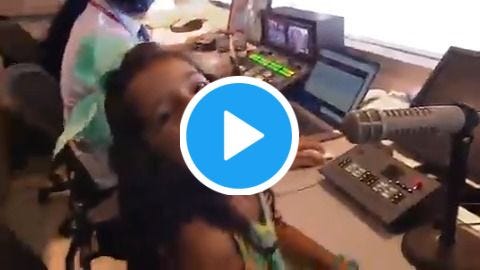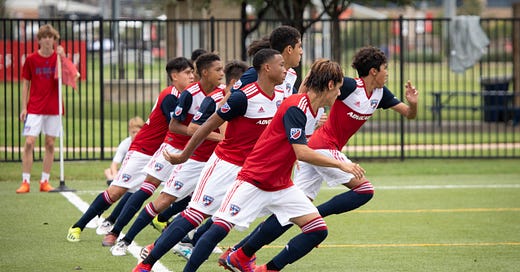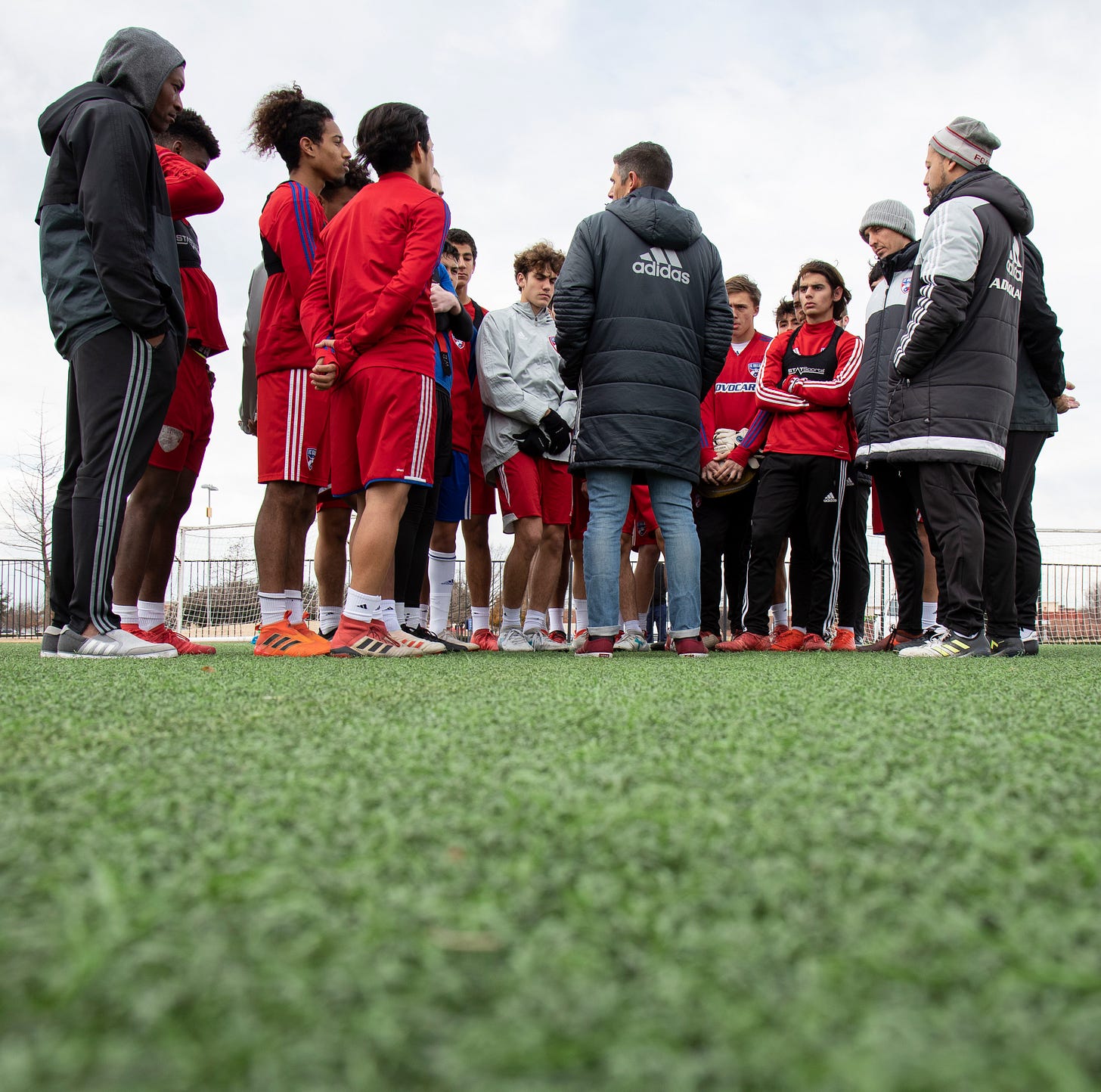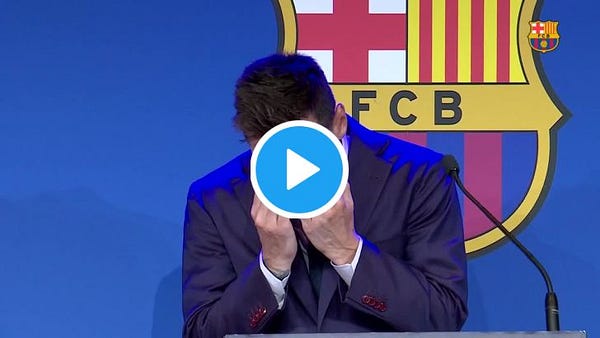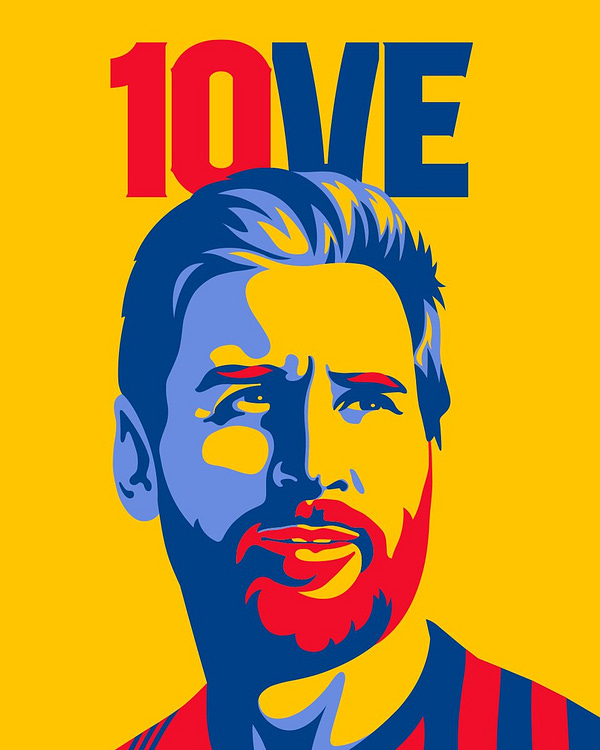Has FC Dallas Perfected the Player Development Formula?
Thanks to its academy, the MLS club has consistently fed its first team elite talent and made big money in the transfer market.
Tanner Tessmann was about 14 years old when he got the call from FC Dallas inviting him to spend a few days practicing with its academy. Never mind that he was from Birmingham, Alabama, 10 hours away. As an ambitious young soccer player seeking better competition and coaching, he went. And when the club invited him back to join its academy’s residency program full-time in 2016, he went again.
His father PJ remembers having doubts. “I tried to talk him out of it many times—‘You don’t have to do this,’” he recalls. “But, looking back, he was just determined that he wanted to pursue this.”
The Tessmanns had been aiming for a college scholarship. “So we traveled all over the country at 8, 9 [years old], playing soccer, chasing it,” PJ remembers. “So when they called us and scouted him, I thought it would be a good experience. Worst case, he comes home.”
Tanner didn’t come home. And while that scholarship offer did arrive, to play soccer at Clemson University and kick on its football team under his godfather Dabo Swinney, a lifelong friend of PJ’s, Tessmann instead signed professionally with Dallas in February 2020. He made his senior team debut two days later.
Last month, after just 30 senior team appearances with FC Dallas and one cap with the U.S. national team, Tessmann, who turns 20 in September, was sold to newly-promoted Venezia of Italy’s storied Serie A.
PJ laughs about it now, at the suggestion that he might have foreseen 5 years ago, when Dallas called, that his son would be a national team and Serie A player. They had taken a leap, figuring it would get him closer to that scholarship.
“I just had faith that that was where Tanner should be,” PJ Tessmann says. “We just did it month by month and season by season. We were going to support him chasing his dreams.”
As it turns out, Tanner won’t be coming home for a long while yet.
Today, players who spent time in the FC Dallas academy play for Juventus, Bayern Munich, AS Roma and, of course, Venezia. Some are active in England, for Queens Park Rangers and Norwich, or in Portugal, for Boavista and FC Porto. There are players in Mexico and Germany and in Scandinavia and Austria.
Several star for the U.S. national team, like Weston McKennie (our Juventus man) and Reggie Cannon (at Boavista… for now). Chris Richards (Bayern) and Bryan Reynolds (Roma) are some of the most talented young defenders the U.S. has ever produced. And it’s entirely possible that in some future World Cup game, the entire back line will hail from the Dallas academy while McKennie and Kellyn Acosta feature in the midfield in front of them.
As of this summer, 15 FC Dallas academy products have been called up to a U.S. national team camp. Ten FC Dallas products made the U.S.A.‘s preliminary Gold Cup roster this summer. Two of them, Justin Che and Jonathan Gomez, were only 17. Ricardo Pepi was all of 18.
There are currently 12 homegrown players on FC Dallas’s first-team roster and the club has signed 43 academy products since 2009 although some, like McKennie and Richards, refused and went straight to Europe.
According to Transfermarkt, Dallas made $17 million from the sale of Reynolds, Tessman, Cannon, Richards and Alejandro Zendejas alone. Now consider that the first team’s entire payroll adds up to about $10.6 million, per the MLSPA.
How did this happen?
FC Dallas is not the league’s model franchise. In 25 seasons, it has reached the MLS Cup final only once. It has made four Conference Finals, won two U.S. Open Cups and claimed one Supporters’ Shield for the league’s best regular season record. Going into this campaign, the club had an all-time regular season record of 327 wins, 294 losses and 166 ties.
It isn’t the league’s richest team and it has rarely made daring, ambitious signings. It hasn’t been run particularly cleverly or poorly. It has a nice stadium, but one that’s out in the suburbs and struggles to consistently draw big crows.
That’s FC Dallas. In the middle of the pack in more or less every way.
Yet the thing that does set the Hoops apart is that academy—the best in the league, just edging out the Philadelphia Union’s. So say people who follow these things closely.
Chris Hayden, who oversees the club‘s youth development, has worked for FC Dallas since 2005 and helped launch its academy in 2008, coaching just about every one of its graduates. There is no secret sauce to the success, he says, just a bunch of key ingredients.
“We’re sort of in a perfect storm in Dallas,” Hayden says.
It starts with talent, of course. And the greater Dallas area is heaving with it, thanks to a burgeoning population and a large Mexican-American community. The academy also has good facilities and physical and sporting proximity to the first team. The warm climate in the South helps. And there has been continuity in the program, paired with investment from an ownership that never questioned the plan to develop youth players long before that was a standard ambition in the league.
“A lot of success we’re having now is based on a really long-term project,” Hayden says. “We’ve mostly stayed true to that project. We haven’t really varied much. We haven’t had big personnel change where we’ve had an about-face.
“There’s been a lot of belief in youth. And expectation,” he continues. “As we’ve given young players opportunities and they’ve proven that they have the level or adapted to the complexity and difficulty of the league, it’s just bolstered that belief. It’s become easier over time. I don’t think there’s any hesitancy to put young players on the field because it’s worked out. And as we’ve now had more players move abroad, that belief is now turning into opportunity for transfers as well.”
Back in 2010, the FC Dallas academy partnered with the local school district to get its academy kids into the local public-school system in Frisco on a modified schedule, allowing them to practice more while keeping up academic rigor. That meant the club could double practice sessions from three nights a week to five or six afternoons. Bad grades will keep a player off the field, because like any good academy, Dallas threads the needle between being socially responsible to the young men in its charge—understanding that most won’t make it as professionals—while maintaining a highly competitive environment where a spot must be earned and earned again.
Dallas also bought in to its youth project in other, less obvious ways. It seldom signed pricey Designated Players even when those were all the rage in the wake of David Beckham’s arrival to the league in 2007. That same year, Dallas recruited aging Brazilian star Denilson. His brief spell with the club was a fiasco and the club never went to that well again, opting for an entirely different model.
“It gives you a different kind of culture,” Hayden says of the pursuit of big names. “Typically, when we have brought in an international player, it’s been a young player still trying to make a name for himself. If you have aging stars, it’s difficult to blend in very young players. It’s a difficult locker room and a very different dynamic for the first team staff.”
Instead, the club began signing its academy products as early as 2009. “Initially, you need success stories; you need players signing,” Hayden says. “And then you need players to get debuts. And then you need players to get starts and score goals and have key moments. These moments create the culture of the academy. You need those stories. If you don’t have a lot of players emerging from the academy, it becomes hard to sell players [on joining].”
Dallas did have those signings and debuts and goals and key moments and stories. Which has made Hayden’s job in recruiting the best talent to his teams a great deal easier. He remembers sitting in living rooms more than a decade ago trying to convince families that an unproven MLS academy was a worthy place for their sons to develop, without a proof of concept in the form of a successful alumnus. It was often difficult.
Now, the academy is constantly saying no to families eager to relocate in order for their preteen to get into one of its teams. “We get contacted all the time by crazy parents that want to move to Dallas and do things before they should,” Hayden says. “And there’s a lot of pressure on kids. And we just don’t really like that.”
The academy doesn’t take non-local talent until they hit puberty, a key developmental phase. But per happenstance, players like McKennie and Reynolds were on an FC Dallas team by 11 because they were local. Che, Ferreira and Sealy arrived at just 8 years old—the latter two because their fathers were senior team players.
No matter the age, Dallas is attractive to prospects because they see a clear path into the pros. This, Hayden points out, is crucial. The club’s choice to emphasize its own player development over importing arrived veterans has given it a reputation for giving youth a chance.
Slowly, this has become the norm in the entire league, where academies aren’t just blossoming in Dallas and Philadelphia, but in New York, Los Angeles and Toronto as well. While the league’s playing level keeps creeping up, it has long since weened itself off the habit of ushering Europe’s aging stars into retirement and fields academy products instead.
“A kid that’s starting in MLS at 17, 18 years old—it’s hard to break into La Liga or the Premier League at 17 or 18,” Hayden says. “In some ways, we have a sort of advantage. We can really accelerate the development of a young player onto an MLS roster. It’s not because the level isn’t high. It’s because I think that we’re in this moment where some clubs are interested in transferring players [out] and so if they can debut earlier, they’re going to have more opportunity.”

Which brings us back to Tanner Tessmann.
MLS clubs like Dallas have come to understand their place in the global marketplace for players. That’s not to denigrate them or the league. Save for the Premier League and maybe a handful of teams in Spain, France and Germany, every club in the world is a selling team. That’s just how soccer’s economy functions. And Dallas sees opportunity in that system.
After Tessman spent just over a season in the first team, the club cashed in on him. When Venezia proclaimed its interest, the 19-year-old was eager to go. The club made it happen. “Dallas was great as far as understanding this opportunity,” father PJ Tessmann says. “When it presented itself, they initially didn’t want to sell him, but they also didn’t want to stand in the way of this opportunity for him. Which is a credit to them. They could have blocked it easily.”
This, ultimately, is another selling point for the FC Dallas model. It will develop players, get them into the pros if they’re good enough, and won’t stand in the way when a nice offer arrives. A reputation for moving players along—thus creating a spot for the next academy graduate to slot into, avoiding bottlenecks—is as beneficial in recruitment as a track record of turning out great players.
“Dallas to me does it the right way because they’re about the young player,” PJ Tessman says. “Wherever that development leads, they’re going to help. The guys that don’t make the first team, they’re going to help them. The guys that go on to the first team and then, like Tanner, get an opportunity, they’re going to help them.”
Tanner Tessmann left the club on very good terms. PJ believes he may well come back to FC Dallas someday. This is another best practice for clubs that focus on talent development: let a player go when he’s ready to and he might come back while he still has something left to give.
Tessmann can always come home.
Soccer miscellany:



